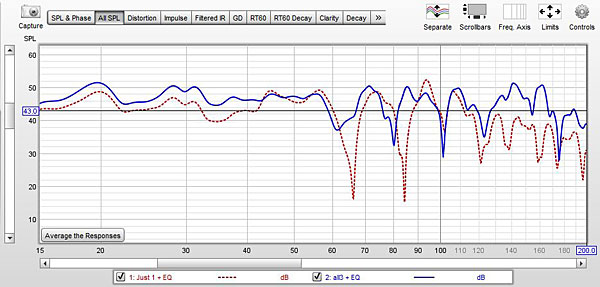While DBA is the double array with delay, SBA is just the single array of woofers on the front wall with massive dampening of the rear wall. This will give a much better response and time domain behaviour higher up in frequency vs DBA.Hello again. Some of these terms are new to me but one thing thats for sure is that what DBA is, or how one is set up, isn't analogous across the diy community.
My understanding was that a DBA involved flush mounted woofers on front and rear wall, time aligned at the listening point across the width of listening space... on the other forums I've been learning about another approach where they are placing woofers front and back wall symmetrically and using the rear woofers to cancel out the signal coming from the front... from there, they use peak eq filters to further tailor the FR.
I do not know the capabilities of a single bass array (SBA), could you please elaborate on the set up of such a thing? Does this imply flush mounting? Would a large MTM be considered a bass array?
Quality of the low frequency is more than just a good deep bass response. The mid and upper bass and low midrange is actually more important as we more sensitive to this range. Something that the multiple subwoofer approach doesn't adress and is one if its major weaknesses. DBA can go higher in frequency than traditonal multiple subwoofers depending on the number and proximity of woofers used in the array, but SBA will work much higher. And as mentioned previously SBA can be combined with diffusion which is IMO very import psycoacoustically. Just as speakers though, the quality of the directivity of the diffusers is important

